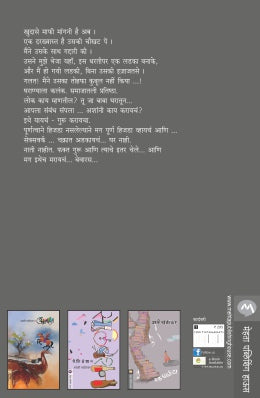HIS DAY
HIS DAY is backordered and will ship as soon as it is back in stock.
Couldn't load pickup availability
Genuine Products Guarantee
Genuine Products Guarantee
We guarantee 100% genuine products, and if proven otherwise, we will compensate you with 10 times the product's cost.
Delivery and Shipping
Delivery and Shipping
Products are generally ready for dispatch within 1 day and typically reach you in 3 to 5 days.
Details:
-
ISBN: 9789386888594
-
Edition: 1
-
Publishing Year: November 2017
-
Pages: 252
-
Language: Marathi
-
Category: Fiction
-
Publisher: Mehta Publishing House
-
Binding: Paperback
-
Format: Paper Bag
Description:
This novel delves into the life of the third-gender community, or Hijras, who are often neglected and ostracized by society. The story explores the complexity of their identity, their struggles, and their deep desire for acceptance and recognition in a world that often disregards them. Hijras, born from either a man or a woman, exist in a liminal space where gender and societal norms are questioned and disrupted. They navigate a world where gender expectations are rigid, yet their existence defies conventional boundaries.
The novel reflects on the transformation a person undergoes when understanding their body and identity, leading them to move beyond societal norms. It speaks of the emotional and psychological journey of a person attracted to the same sex, a life often marked by challenges, alienation, and suffering. Hijras beg for their daily survival, offering blessings at auspicious occasions or sometimes indulging in sexually transmitted acts.
Despite the hardships, they form strong, tight-knit communities, living under one roof, with their guru leading them. The guru plays a crucial role in their survival, ensuring their basic needs such as food, clothing, and healthcare are met. In exchange, the disciples (chelas) offer their earnings to their guru. This communal bond is central to their identity and survival in a world that marginalizes them.
The novel sheds light on the struggles, compromises, and painful experiences Hijras face from youth to old age. Despite their trials, they continue to live with resilience and pride. The story challenges societal perspectives, presenting Hijras not as outcasts but as human beings deserving of dignity and respect. The narrative is a plea for understanding, as Hijras long for a good life, a life in which they are accepted and valued for who they are—living proudly as individuals.







